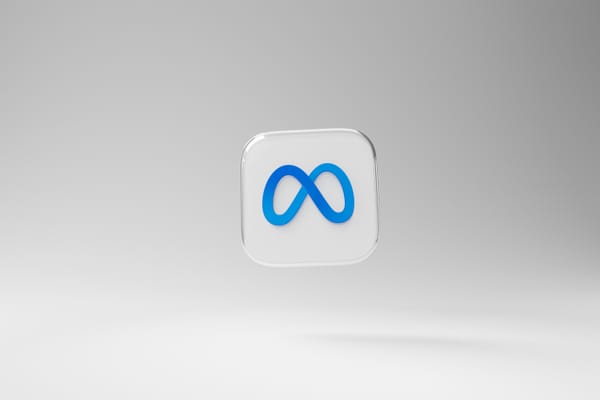How Elon botched his war on bots
PLUS: Why it's time to start leaving Twitter behind

On Sunday, Elon Musk tweeted a vague warning: “the bots are in for a surprise tomorrow.” He didn’t say what the surprise was. But in the hours that followed, Twitter blocked traffic from roughly 30 mobile carriers around the world, effectively cutting off access to hundreds of thousands of accounts, primarily in the Asia-Pacific region, including vast swaths of Russia, Indonesia, India, and Malaysia.
The project was part of Elon Musk’s attempt to rid Twitter of spam. But rather than work to remove individual offenders, the company identified mobile networks associated with large spam networks in specific countries, and blocked users who relied on those networks from receiving SMS messages from Twitter, impacting people with two-factor authentication. Then it blocked traffic from those carriers completely.
From 5:35 AM to 6:45 AM PT on Sunday, Twitter shut down access to the primary telecom providers in India and Russia, as well as the second biggest telecom company in Indonesia, Platformer has learned.
Almost immediately, complaints started to roll in, as legitimate users found they were unable to access Twitter.
In Slack, a Twitter engineer shared an email from one telecom provider who said users were complaining that Twitter had stopped working. “I expect more emails like this to hit our peering queue tomorrow,” an employee said. “We blocked a fair few [sic] huge carriers, so I would expect so,” another responded.
The company quickly unblocked the carriers, and told them the service issues were due to “routing configuration changes.”
The incident highlights growing confusion within Twitter as the company struggles to carry out Musk’s erratic commands with his ever-shrinking pool of engineers. In some cases, as with the telecom issue, the company has been charged with making huge changes without doing due diligence on their potential consequences.
In others, employees are being asked to scramble to answer questions about individual tweets.
Over the weekend, Musk asked Twitter employees to explain why a tweet about a crypto scam, shared from an account impersonating him, had not been identified as such by the company’s systems. “I believe it is because this account is legacy verified,” an employee explained in Slack. They later added: “The legacy verified account was hacked” and noted the account was now locked and “EM’s image has been removed from the profile.”
“Is it safe to let Elon know that we are making modifications that will downrank these kind of accounts/situations in the future?” asked Twitter’s head of trust and safety, Ella Irwin. An employee responded that Smyte, a content moderation tool that Twitter acquired to identify abnormal behavior, “has been unstable for at least a week now.” Irwin thanked the employee and said that the fact that an account was verified under the old system “should not be an exception criteria for taking action fast.”
In an interview with the Wall Street Journal published today, Irwin tried to spin Twitter’s increasing reliance on automated systems as “biasing towards moving quickly and figuring out the details in some of these areas after.”
But the truth is that Twitter has little choice but to rely on automated tools: it continues to fire employees seen as insufficiently loyal to Musk, even if they do crucial work for the company.
On Friday, Musk sent an email to Twitter employees threatening to sue people who leak confidential information to the press, Platformer was the first to report. “If you clearly and deliberately violate the NDA that you signed when joining Twitter, you accept liability to the full extent of the law and Twitter will immediately seek damages,” he wrote. Employees had until 5 PM PT on Saturday to sign a pledge indicating they understood.
Some Twitter employees failed to respond because they were not checking their email over the weekend. On Sunday, they found their access to Twitter’s systems had been cut off.
Then a second email went out: this time, employees were asked to email the people team reaffirming their commitment to stick to their NDAs by December 15, 2022.
By Sunday afternoon, more than 100 employees had been deactivated from Slack.
The company also on Monday disbanded its trust and safety council, which once advised Twitter on content moderation issues, according to an email shared with Platformer.
“Our work to make Twitter a safe, informative place will be moving faster and more aggressively than ever before and we will continue to welcome your ideas going forward about how to achieve this goal,” the unsigned email to council members read. “We will also continue to explore opportunities to provide focussed and timely input into our work, whether through bilateral or small group meetings.”
It continued: “Your regional points of contact will remain the best people to contact to escalate concerns, please let us know if you need reconnecting.”
Three members of the council quit last week in response to Twitter no longer engaging with their requests.
The email was sent to members less than an hour before they were scheduled to have their first meeting since May.
— Zoe Schiffer
Casey Newton contributed reporting to this item.
It’s time to start leaving Twitter behind
The thing is, there have always been good reasons to quit Twitter. From the beginning, people found that the platform was too distracting, too depressing, too polarizing, too addictive. It riled them up and brought them down. It shredded their attention and made once-common tasks, such as reading books, feel impossible.
Quitting Twitter is, in fact, the default outcome for anyone who ever created an account. On an earnings call in 2014, the company revealed that nearly 1 billion people had logged in to the service, but three quarters of them had already churned. It’s one reason that the company struggled to grow over most of the past decade — it wasn’t that people hadn’t heard of Twitter. It was that they tried it, and didn’t like it.
So common is the idea of quitting Twitter that, by the middle of the decade, some writers were already begging their peers to stop writing essays about it. “There Is No Need to Explain Why You Quit Twitter,” read the headline of a Richard Lawson piece in Vanity Fair in 2015.
“The Internet requires nothing of you and you owe it nothing, least of all an explanation for why you’re ceasing to use one of its many services,” Lawson wrote. “It’s rarely a good look, trying to give thoughtful shape to what is, almost always, a petty personal decision the way most personal decisions are petty. ‘I just don’t want to be on there anymore’ is the absolute maximum that anyone should say about any of this.”
It is in this spirit of humility that I tell you that, observing Elon Musk’s escalated attacks on a former employee and continued promotion of far-right ideas and personalities, over the weekend I found myself thinking: I just don’t want to be on Twitter anymore.
It has all been bad, of course. From the moment Musk dragged that sink into Twitter headquarters, assured the assembled employees there that he wasn’t about to eliminate 75 percent of them, and soon did exactly that, Musk’s hostile takeover of the company has been ugly to behold.
Any acquisition is bound to cause turmoil in the lives of its employees, but Musk seemed to revel in it: laying off employees so indiscriminately that he was forced to beg many to return a day after terminating them; forcing a mostly remote workforce back into the office on a day’s notice; imposing impossible deadlines on those that remained; requiring workers to sign a digital loyalty oath promising to be “extremely hardcore”; putting workers through regular “code reviews” that have often served as a pretext for firing them; purging workers who were found to have been critical of him in Slack or on Twitter; installing beds in the office to encourage workers to sleep there.
Along the way, he also committed himself fully to mainstream Republican politics, encouraging his 121 million followers to vote for GOP candidates in the midterms and regularly promoting other conservative causes. Most recently, he has invited right-leaning journalists to review internal communications related to content moderation decisions and publish them in eye-wateringly long threads called “The Twitter Files.”
Most journalists would be interested to read these deliberations, which concern some of the highest-stakes questions Twitter has ever considered — notably, the decision to deplatform Donald Trump after the January 6 attacks. And reasonable people can agree to disagree about the decisions its employees reached; the reason that in some cases those calls went all the way to the CEO’s office is that they were difficult, and had left the company with no good options.
Musk, though, has presented the files variously as evidence of corruption and criminal conspiracy — ”Twitter is both a social media company and a crime scene,” he tweeted Saturday — and as a grand entertainment for the masses, punctuating his threads with popcorn emoji. Along the way, his effort managed to expose the personal information of several people, including several low-level employees who immediately found themselves on the receiving end of abuse and harassment.
It was not the first time Musk had put former employees at risk — before the deal closed, he had repeatedly amplified criticism of Twitter’s then-head of legal and policy issues, Vijaya Gadde. More recently, he falsely stated that the company had “refused to take action on child exploitation for years” — an especially egregious statement given that he had just purged 80 percent of the company’s contract workforce, which included the majority of its content moderators. (We’ve reported that Twitter’s efforts here were indeed understaffed, but it’s not true that the company took no action.)
In recent days, Musk has increasingly advanced the narrative that Twitter was a den of corruption before he bought it. And over the weekend, he made his most disgusting smear to date.
Here’s Dana Hull at Bloomberg:
Elon Musk posted tweets including an excerpt of Yoel Roth’s doctoral dissertation Saturday that suggested the former Twitter executive is an advocate for child sexualization — a baseless trope that leaves Roth susceptible to online abuse. [...]
“Looks like Yoel is arguing in favor of children being able to access adult Internet services in his PhD thesis,” tweeted Musk, with an excerpt from the 300-page dissertation. “Gay Data,” the title of Roth’s 2016 dissertation at the University of Pennsylvania, is about Grindr, the geosocial networking service popular with the LGBTQ+ community.
To be clear, the dissertation is about how to keep predators away from children. But in an interview with Kara Swisher, Roth had dared to criticize Musk after resigning. And so this was his punishment: a smear pushed out to 121 million people, which led immediately to Roth being overwhelmed with death threats.
As if all of that weren’t terrible enough, Musk followed up by tweeting “My pronouns are Prosecute/Fauci” — a smooth-brained, Tucker Carlson-ass Mad Lib of a post that served to bolster the kind of anti-trans and anti-vaxx culture warriors that most people have absolutely no desire to hear from, ever. (Culture warriors who, I assume, made up a good number of the 60,000-plus accounts Musk recently returned to the platform after falsely saying he would first consult with a council of experts before doing so.)
Musk has long said he wants to create platform policies for the moderate majority of the user base. He regularly reminds people that he is a registered independent who has mostly voted for Democrats. But his online commentary and actions this year tell a different, more dangerous story, and people who say otherwise are kidding themselves.
Meanwhile, Musk’s full-throated embrace of the conservative mainstream has actively degraded Twitter as a news source. Because he is the platform’s CEO, its most-followed user, and topic No. 1 nearly every day there now, opinions about Musk now dominate the timeline. (Candidly, Zoe and I have both contributed to and benefited from this phenomenon.)
I imagine all this is a lot of fun for Musk, and maybe even worth the $44 billion he overpaid for it. But it can be hell for anyone who showed up to talk sports, tech, entertainment, or anything else.
From the start, my strategy on Twitter has been to tell jokes about tech, use the engagement on those posts to grow a following, and then promote my work to that following. (Some people who read my tweets also became friends and sources; Twitter was great for that, too.)
Now, awaiting Musk’s latest tweets, I find myself anxious that one of his former employees could be physically assaulted or worse over what the CEO is posting. I don’t know how, in that environment, to make little jokes about Google’s latest failed messaging app, or bad PR pitches, or any of the other bits I have been doing on Twitter forever. I don’t know how to pretend that what is happening is not actually happening. I don’t want to provide, even in the smallest of ways, a respectable backdrop against which hate speech against my fellow LGBTQ people, or Black or Jewish or any other people, can flourish.
No company has influenced the media more in my career than Twitter has. For more than a decade it has shaped what news gets covered, how, and by whom. It is also the largest platform I have, at least by number of followers, and has been the primary way Platformer has found new customers since I launched the newsletter in 2020.
At the same time, when I started writing an email newsletter in 2017, I did so out of anxiety that I would find myself at a crossroads like this: with a malignant landlord standing in between me and the audience I had cultivated. I feel fortunate that the Platformer audience — now just shy of 100,000 readers — can make a divorce like this seem possible.
I’m not burning all the boats just yet. I view the next few months as a transitional period in which we will work to find new alternatives for gathering news and promoting our work. But it feels worth trying.
So what are we doing?
- One, I’m only using Twitter to tweet out new editions of Platformer. No more jokes or having fun in (or even reading) the replies for me. The idea is to begin to use Twitter as a tedious, automated utility, and do my part to gradually drain the life out of the platform. (I do plan to keep my direct messages open, but will quickly move those conversations to other platforms.)
- Two, we’re not going to break news about Twitter on Twitter any more. Instead, we’re going to post it first in our Discord, which is available to paying Platformer subscribers. From there, people can share it to whatever other platforms they like.
- Three, we’re going to rethink how we gather news. We already depend heavily on Techmeme to spot breaking news; we’ll also be thinking about how we can use our Discord and other tools to augment it.
- Four, I deactivated one of my alt accounts and have put the other one into read-only mode. This is the account I use to find funny tweets and post them daily to my Instagram story, which I plan to continue doing a while longer. This moves the best parts of Twitter to a place where the company can’t monetize them; it also has been helping me grow my Instagram account, which I may experiment with as a Twitter replacement. (Particularly if Meta goes through with trying to clone Twitter. Which it absolutely should.)
- Five, we’ll experiment with other platforms. As of today, I am now (sigh) an active Mastodon user. Under significant pressure from many of you, I’m now on the waiting list to join Post as well. If you are currently building a Twitter-like thing, email me and I promise to at least try out your beta. As a wise man once said, it’s time to build.
All of this is, to say the least, a fluid situation. I expect we’ll have to adapt plenty of times along the way. (I’m not sure how much longer this newsletter will end with good tweets, for example.) The thing I will miss most about Twitter is seeing in real time, and with such ease, what people are saying about the news, and until I feel like that need has been met on some level I will always miss it.
But I’d rather risk being out of the loop than give any of my best work to Gab Jr. The Twitter we once knew is dead, and what replaced it is well on its way toward becoming a smoking ruin.
So long, and thanks for all the likes.
— Casey Newton
Governing
- FTC chair Lina Khan’s attempt to block Microsoft from acquiring Activision Blizzard may face a significant hurdle, as courts have historically been skeptical of challenges to vertical mergers, where the two businesses don’t compete directly. (David McCabe, Cecilia Kang and Karen Weise / New York Times)
- US Department of Justice prosecutors are split on whether to charge Binance in a criminal investigation for possible money laundering and sanctions violations. (Angus Berwick, Dan Levine and Tom Wilson / Reuters)
- Binance, trying to reassure investors in the wake of FTX’s collapse, hired an outside firm to prepare a “proof of reserve report.” But the letter it produced wasn’t an audit report and didn’t address the effectiveness of the company’s internal financial-reporting controls. (Jonathan Weil / Wall Street Journal)
- Freedom of speech has been redefined as the right to say only what conservatives want you to say by Elon Musk and others, this piece argues. (Adam Serwer / The Atlantic)
- Elon Musk said Twitter will begin to tell users if their posts have been ‘shadowbanned’ and give them a way to appeal. (Nick Turner / Bloomberg)
- Twitter’s head of trust and safety Ella Irwin said she gave Bari Weiss the screenshots that Weiss included in part two of the Twitter files. The screenshots had raised concerns that Weiss had access to sensitive user data. (Kurt Wagner / Bloomberg)
- Twitter has fired much of its trust and safety team and is relying more on automated systems, making it easier for authoritarian governments like China’s to silence critical voices. (Adam Rawnsley / Rolling Stone)
- Three members of Twitter’s trust and safety council resigned in protest of Elon Musk’s leadership. (Net Family News)
- Google has been trying for years to get access to veterans’ biomedical samples to build AI tools to diagnose diseases, raising ethical concerns among DoD staffers. ( James Bandler / ProPublica)
- Google refused to change its search results to display China's national anthem, rather than a protest song, when users search for Hong Kong's national anthem. (Darerca Siu and Jessie Pang / Reuters)
Industry
- How TikTok leads kids down a rabbit hole of extreme bodybuilding. (Christian Nicolai Bjørke, Henrik Bøe and Caroline Utti / NRK)
- Experts worry that ChatGPT and similar technologies could replace search engines and introduce serious issues with misinformation. (Cade Metz / New York Times)
- People with dyslexia are using ChatGPT to send work emails, among other real-world uses of the still less-than-perfect technology. (Drew Harwell, Nitasha Tiku and Will Oremus / Washington Post)
- Women and people of color are critiquing Lensa AI for generating portraits that show exaggerated physical characteristics and promote unrealistic beauty standards. (Sara Ashley O'Brien / Wall Street Journal)
- AI image-generation technology makes it easy to create realistic deepfakes that show people doing embarrassing or illegal things. (Benj Edwards / ArsTechnica)
- Meta is shutting down its Connectivity division, which at one point was developing a satellite-based internet system, after almost 10 years. (Emma Roth / The Verge)
- Twitter is rolling out Community Notes (the crowd sourced content moderation tool formerly known as Birdwatch) to all users globally. (Igor Bonifacic / Engadget)
- Inside the lavish, post-Google lives of Sergey Brin and Larry Page, who rely on a web of corporate entities and family offices to minimize their tax obligations, protect them from liability, and shield their wealth from public view. (Hugh Langley and Rob Price / Insider)
Those good tweets
Cities should have to bid to host the next season of The White Lotus like the Olympics
— Sam Stryker (@sbstryker) 11:22 PM ∙ Dec 11, 2022
have I accomplished my goals for this year? no. but did I eat well and exercise often? not in the least. but did I mature relationally and as a person? buddy,
— Owl! at the Library 😴🧙♀️ (@SketchesbyBoze) 5:39 PM ∙ Dec 11, 2022
my cousins aren’t allowed social media so they’ve been using pinterest like instagram and my cousin is showing me fight videos in a board he has saved called “fights!!!!!!”
— lea (@bigfatmoosepssy) 6:27 PM ∙ Dec 11, 2022
The Reddit World Championship
— Weird Ai Generations (@weirddalle) 4:04 PM ∙ Dec 11, 2022
Talk to us
Send us tips, comments, questions, and Twitter alternatives: casey@platformer.news and zoe@platformer.news.






